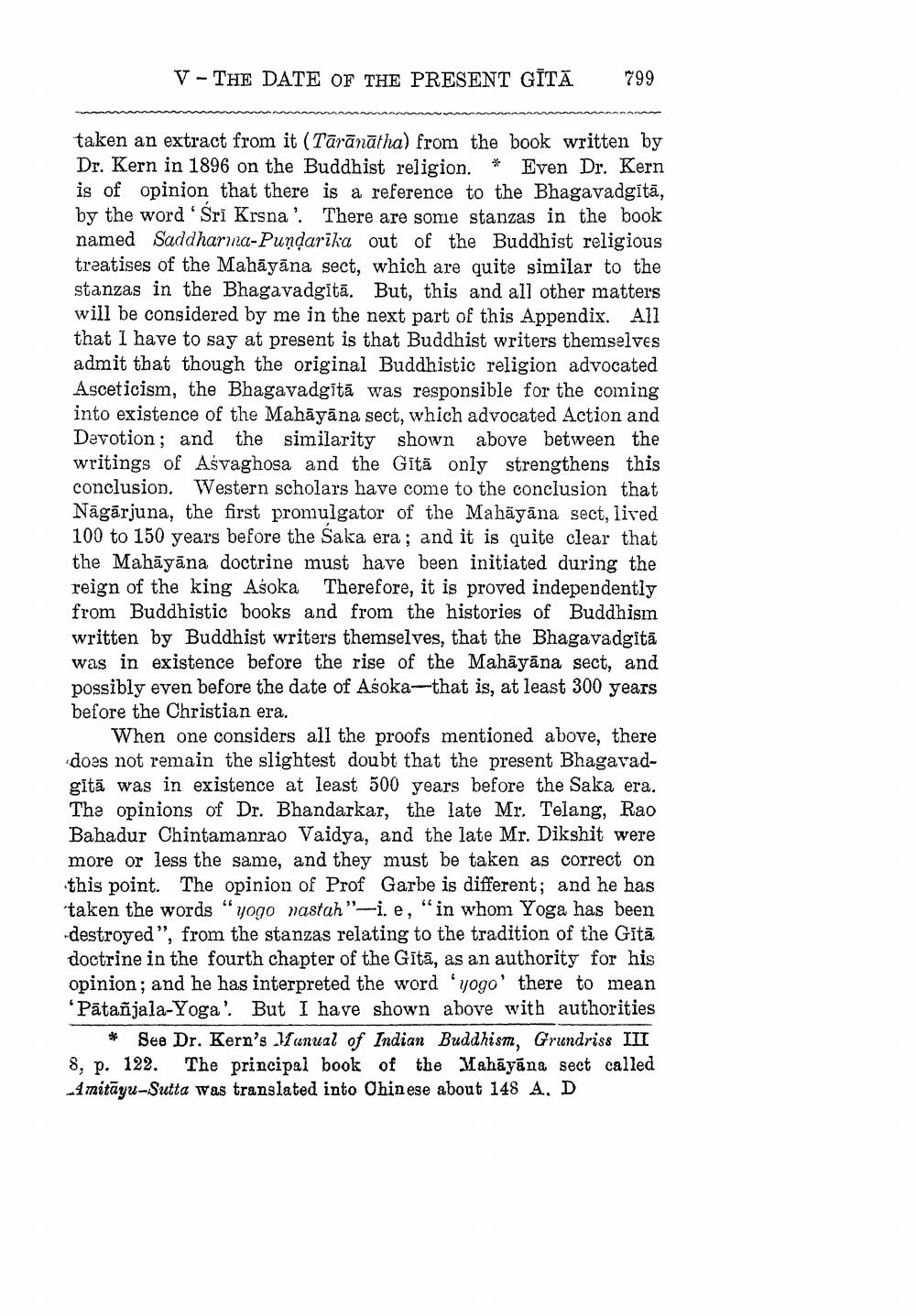________________
V - THE DATE OF THE PRESENT GITA
799
taken an extract from it (Tārānātha) from the book written by Dr. Kern in 1896 on the Buddhist religion. * Even Dr. Kern is of opinion that there is a reference to the Bhagavadgitā, by the word 'Sri Krsna'. There are some stanzas in the book named Saddharma-Pundarika out of the Buddhist religious treatises of the Mahāyāna sect, which are quite similar to the stanzas in the Bhagavadgitā. But, this and all other matters will be considered by me in the next part of this Appendix. All that I have to say at present is that Buddhist writers themselves admit that though the original Buddhistic religion advocated Asceticism, the Bhagavadgitā was responsible for the coming into existence of the Mahāyāna sect, which advocated Action and Devotion; and the similarity shown above between the writings of Ašvaghosa and the Gitā only strengthens this conclusion. Western scholars have come to the conclusion that Nāgārjuna, the first promulgator of the Mahāyāna sect, lived 100 to 150 years before the Saka era ; and it is quite clear that the Mahāyāna doctrine must have been initiated during the reign of the king Asoka Therefore, it is proved independently from Buddhistic books and from the histories of Buddhism written by Buddhist writers themselves, that the Bhagavadgitā was in existence before the rise of the Mahāyāna sect, and possibly even before the date of Asoka--that is, at least 300 years before the Christian era.
When one considers all the proofs mentioned above, there does not remain the slightest doubt that the present Bhagavadgītā was in existence at least 500 years before the Saka era. The opinions of Dr. Bhandarkar, the late Mr. Telang, Rao Bahadur Chintamanrao Vaidya, and the late Mr. Dikshit were more or less the same, and they must be taken as correct on this point. The opinion of Prof Garbe is different; and he has taken the words "yogo nastah”-i. e, “in whom Yoga has been destroyed", from the stanzas relating to the tradition of the Gitā doctrine in the fourth chapter of the Gītā, as an authority for his opinion; and he has interpreted the word 'yogo' there to mean 'Patañjala-Yoga! But I have shown above with authorities
* See Dr. Kern's Janual of Indian Buddhism, Grundriss III 8, p. 122. The principal book of the Mahāyāna sect called 4 mitāyu-Sutta was translated into Chinese about 148 A, D




